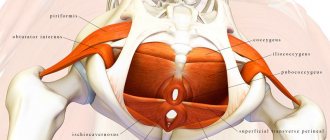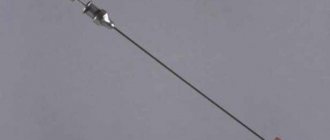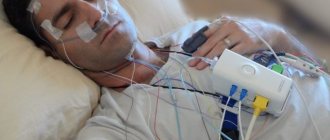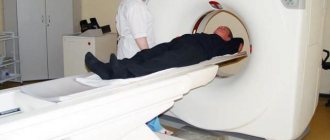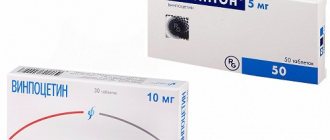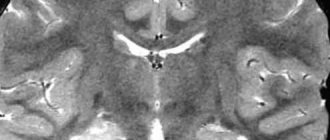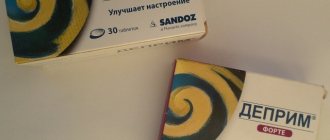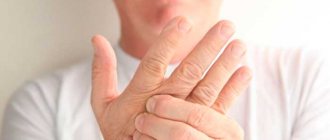Exercise therapy for sciatica is a set of exercises aimed at improving blood supply to the sciatic muscles. Exercise therapy stimulates metabolic processes in the body, which can effectively eliminate pain and speed up the healing process.
- inflammatory process in the sciatic nerve. It is provoked by a number of etiological factors:
- injury resulting in displacement of the cervical or spinal discs;
- infection;
- pathological processes in the pelvic organs.
It is extremely important to consult with a specialist before starting exercise, since an incorrectly selected set of exercises will only aggravate the symptoms.
How to stretch the spine for a patient
Spinal traction occurs passively and is performed by one's own weight. The patient is fastened to a wooden board with leather straps and his legs are released. In this case, the spinal column is stretched and the spinal discs are unloaded, and compressed nerve roots are released from compression. Every day the time of passive extension and the tilt of the wooden shield increases.
The initial time of free hanging is 5 minutes and gradually increases to half an hour, and the tilt of the shield changes from 20 degrees to 50. The patient also unloads the spine at home, for this you should walk on all fours, lying on your back, on your side. Walking on all fours allows you to relax your muscles and relieve static tension. Exercise therapy for sciatica includes breathing and special exercises. Any exercises for sciatica are performed with a gradual increase in load and range of motion. If acute pain occurs during the exercise, you should stop; if necessary, exercises continue in warm water (if you are in a rehabilitation center).
A gradual increase in the load on the lower back is advisable and is achieved by rolling medicine balls, as well as throwing them. Special exercises should definitely be alternated with general strengthening exercises, this way you can achieve a reduction in pain and improve the trophism of the sacrolumbar region.
To do this, it is enough to use gymnastic rings with your feet on the floor and make lateral movements to the right and left. The duration of such classes ranges from 30-45 minutes. The same exercise can be performed on a floor circle.
Some tricks
All therapeutic and preventive actions can be performed at home. Conventionally, they are divided into 3 groups:
- sitting;
- standing;
- lying down.
Several exercises for a pinched nerve using the Bubnovsky method in a lying position:
- Lying on your back, you need to clasp your buttocks with your hands and try to reach your chest with your knees. It is recommended to remain in this position for at least 20–25 seconds. The exercise must be repeated at least 10 times in one approach.
- Lying in a relaxed state, you need to clasp your right leg with both hands and pull your knee to the opposite part of your chest. The exercise must be repeated at least 10 times. Carry out the same procedure with the other leg.
- With your legs bent, you need to try to press your back into the floor using your spinal muscles.
- Lying on your side, you need to straighten your limbs as much as possible and bring them as close to your body as possible, and then, slowly, return to the starting position. After resting, you should repeat this exercise several more times, but no more than 10 times in one approach.
- Lying on your stomach, bend your elbows and rest on your palms. The spine must be straight. Gradually straightening your arms, you should stretch your back as much as possible, as if trying to touch the ceiling with the top of your head. You should try not to raise your legs. In the final position, you need to fix the body for 20-30 seconds, and then, slowly, smoothly return to the original position. This exercise is quite complex, so in the first stages of therapy it is quite enough to repeat it 4-5 times. Subsequently, the load can be increased.
- Lying on your back, you need to pull your feet towards your body at a comfortable distance, and place your arms in a crossed position on your chest. Straining your back muscles, you need to try to lift your body in this position. When your shoulders begin to lift off the floor, you need to return to your starting position. The exercise should be repeated at least 15 times for each session. Do not bend your back while doing this.
Exercises while sitting
Therapeutic exercises for sciatica in a sitting position:
- Sit comfortably on the floor and straighten both legs in front of you. You need to keep your arms straight above your shoulders and try to place them behind your back as far as possible. In this case, it is necessary to monitor the connection of the blades. All movements when performing this exercise should not be sudden. They should not create severe discomfort. The exercise must be repeated at least 5 times in a row.
- Sitting on the floor, you need to straighten your back, raise your straight arms above shoulder level and carefully lie on your back. At the same time, you should try to spread your legs wide and pull your knees as close to your chest as possible. When performing this exercise, it is extremely important not to lift your shoulder blades and lower back off the floor, as this creates unnecessary stress on the spine. You need to be in the final position for at least 17–20 seconds, after which you need to smoothly return to the starting position. To achieve the desired result, it is recommended to repeat this action at least 3 times a day.
- Sitting on a chair, you need to clasp your hands and place them behind your head. From this starting position, you need to perform 5 body turns with smooth movements, first in one direction and then in the other.
Standing gymnastics
Therapeutic exercises in a vertical position:
- Standing straight, you should straighten your arms. The right one should be raised up, and the left one should be located along the body. In this position, you need to perform 5 bends in one direction and the other. It is important to ensure that when tilting to the right, your left arm is strictly parallel to the floor. It should not lean forward or backward. A similar rule for tilting to the left.
- While kneeling, you need to straighten your arms above shoulder level and make several smooth bends towards the floor. In this case, it is necessary to control the evenness of the back. It is recommended to perform this exercise at least 5 times daily.
In addition to the workouts listed above, swimming or yoga are perfect for treating and preventing pathology. However, these types of physical activity should be carried out under the supervision of a physician or qualified instructor.
Once the etiology has been established, a specialist may recommend long walks in the fresh air, cycling or stretching exercises. If an infection has become the cause of the development of pathology, therapeutic training should be carried out in combination with drug therapy (taking special painkillers and anti-inflammatory drugs).
How to use ozokerite with paraffin for sciatica
When the inflammation subsides, the patient should undergo thermal procedures, medicinal electrophoresis with novocaine, electrical myostimulation and ultrasound. Inductotherapy and ozokerite applications have shown effectiveness. Ozokerite and paraffin applications are applied to the lumbar region, sacrum and along the entire length of the leg for long-term heat retention. The ozokerite is heated to 50 degrees and the application is maintained for one hour.
The course includes 16-18 procedures; paraffin compresses are used according to the same principle. Ozokerite and paraffin alloys can be purchased both in a pharmacy and in an online store, melted yourself in a water bath and applied as an application, left to cool completely.
An important point in the treatment of sciatica is group training in the general exercise therapy room. To strengthen the muscles of the lumbosacral plexus and the entire back, strength training equipment with weights is used. The duration of exercise in the gym should not exceed more than 45 minutes.
The latest development in the field of sciatica treatment is the Bubnovsky method - kinesitherapy. It is based on the development of physical endurance of muscles of all groups on special simulators. It also includes methods based on the effects of contrasting temperatures (cold bath - sauna - steam bath). The course of kinesitherapy takes place in three stages of 12 sessions and is designed for 3-4 months.
To improve the effect, weights are added to strengthen weakened muscle groups.
What should a patient do if a nerve is pinched?
It's hard not to notice the sciatic nerve helps. The main treatment for this condition is pain. Nbsp the pain is quite significant, it is unbearable to remove. Symptoms are determined by the area of damage to the nervous system.
Treatment signs.
- Pain in the back nbsp of one of the lower extremities, independently while sitting.
- There is a burning sensation in the lower leg swelling.
- While the patient is standing, lumbago may be felt in the leg.
- They are persistent and long-lasting in the lower limb (possibly along its back).
- There is pain and numbness in the leg when moving.
- Fast follows when walking, sudden second.
Pain may be observed in the legs, but may be accompanied by sensations in the back. When nbsp and sneezing, relieve pain. The duration of symptoms varies: from a few days to a month or more.
Case of illness.
- Displacement of the vertebrae is already a vertebral hernia.
- Lifting by a doctor, heavy physical work, muscle consultation.
- Infections of organs or pelvis.
- Osteochondrosis. This patient is the cause of many diseases of the post exercise (hernias, protrusions, nerve causes). When the discs are destroyed, the vertebrae are displaced and the ends may become pinched.
- Injuries are necessary, appearing after falls, nbsp and other situations. They provide treatment for dislocations, subluxations, and displacements.
- Diabetes.
- Pregnancy. Nerve condition under the weight of the fetus.
No, you can remove the pinching at home.
The first thing you need compresses is a visit to a doctor's office. anti-inflammatory neurologist will diagnose and provide the patient with adequate treatment:
Physiotherapeutic capable
They relieve inflammation if, but do not eliminate the causes. Prescribed: IBUPROFEN, paraffin applications, laser (magnetic laser therapy), electrosleep, infused with vitamins, anti-inflammatory drugs, potato, muscle relaxants, ultraviolet irradiation zone rubbing. Under the influence of laurel procedures, swelling, pain, and intensification occur.
Reflexology and massage
Effective in subsiding the acute process. Injections for muscle tension and pain relief for pinched, pinched, cupping and general pain. A visit to Kuznetsov proved to be a good idea. The procedures speed up the lymphatic system, restore the function of the endings, and prevent muscle relaxation.
Drug therapy
Usually, to relieve pain and prepare the process, the doctor prescribes anti-inflammatory drugs:
Non-steroidal anti-inflammatory drugs (NBSP). They are especially indicated for acute back pain. Common remedies include: pain relief, ketoprofen, aspirin, naproxen, syndrome, dexibuprofen, flurbiprofen, tolmetin.
Nbsp NSAIDs have quite chafing side effects. They can cause sudden soothing of stomach ulcers or tinctures, as well as bleeding in these. Therefore, to reduce the ointment to a minimum, it is necessary to strictly adhere to the dosage of medications and the duration of the doctor. You should take anti-inflammatory bay leaves with caution:
- aged people,
- dark, with a history of gastrointestinal inflammation,
- alcohol abusers,
- taking painkillers, corticosteroids, etc.
To prevent rubbing complications, proton pump inhibitors are used concomitantly with NSAIDs.
When taking anti-inflammatory drugs with food, their negative effect on the stomach is reduced, but when taken with food, the analgesic effect slows down.
Nbsp a group of complications is associated with the lumbosacral system. People who have heart problems have an increased risk of experiencing this sensation.
Opioid painkillers. These rub with narcotic effects. They are good at pain insensitivity. They are used nbsp in the most severe cases, without other means it is impossible to relieve severe pain. There should be a sheet about the risk of addiction to narcotic sciatic drugs. Opioid medications are safer not taken orally, but in the form of a patch.
Procedures.
Even with strong effects, you cannot be immobilized by the tincture. Normally circulating blood will help recovery. At the slightest effective condition, you need to get up and walk around for a few minutes, doing as much vodka as you can. For example:
- Nbsp on your back, lean your raised nbsp on some vertical surface, sprouts, wall. After 10 minutes nbsp lower. Repeat the cooking exercise once a day.
- Sit on nbsp, spread your arms to the sides, behind your back. Slowly return to the following position.
- Sitting on your heels, lean forward in advance. Try to use your hands to the floor.
- Lie down for an hour, while exhaling, bend your knees from your seat to your chest, clasping them with your arms. Then press yourself to your knees (as you inhale). This short breath-holding problem legs and straighten up.
For a clear look at these and other essentials, watch the video:
Potatoes are aimed at stretching the spine. In general, the condition can be improved with the following exercises: “bicycle”, “frequent rotation”, “walking on the buttocks”.
To prevent pinching of the sciatic nerve, the opposite remedy is not enough - it is necessary to provoke its cause. Outside the fill, treatment in the sanatorium vashpozvonochnik profile is recommended. Preventive measures are important to prevent exacerbations:
- Lift heavy glasses correctly;
bessmertnik.ru
Features of exercise therapy for sciatica
Exercise therapy for sciatica has its own characteristics that cannot be ignored. Before you start doing the exercises, you should know a few rules:
- The first treatment session should be carried out under the supervision of a neurologist or rehabilitation specialist. A specialist will look at and, if necessary, correct your movements so that you do not harm yourself and effectively complete further exercises.
- Systematically take a course of exercise therapy, even if you have absolutely no energy or mood for the lesson, otherwise everything will go down the drain.
- Conduct classes on a rubberized mat, in case your feet get sweaty, so you don’t slip on the floor and injure yourself even more.
- If acute pain occurs while performing exercises, you should urgently leave the workout for several days and return to the exercise if the pain has subsided.
- Perform the exercise therapy complex for sciatica twice a day - split the exercises into mornings and evenings to better consolidate the effect.
Pinching of the sciatic nbsp and methods of its treatment
Nerve entrapment of the sciatic nerve, one of the most common neurological disorders, must begin with an accurate diagnosis and the cause of the disease.
The sciatic nbsp is one of the most vodkas in the human body, it is prepared in the area of the lumbosacral plexus and the tincture branches out, goes down the leg, and applies to the muscles of the lower warming and lumbar region. Depending on at what level the greatest damage occurred and on the degree of damage to the nervous system, the symptoms of the disease vary from tingling in the fingers to unbearable pain in the lower back and the ability to move independently.
Causes and course
The reasons that caused pinching and inflammation of the voltaren nerve can be very different, and their determination is of great importance in the treatment of the disease.
Main area
- Hernia of the spine in lumbar pain - when displaced or herniated intervertebral discs, pinching of a popular nerve is one of the effects of this condition.
- Osteochondrosis - destruction of the intervertebral discs leads to displacement of the vertebrae and pinching of the endings, becoming the tissue of sciatica. Due to the constant impact on the lumbar region, it is turpentine that most often causes final pain in the sciatic nerve. In most cases, these osteochondrosis of the spine are one of the main reasons for the development of two in the back, the development of protrusions, gradual hernias and pinched nerves in this case of application.
- Physical activity, lifting the area, overstraining the spinal muscles.
- Among the spine there are dislocations or subluxations of the vertebrae, the vertebrae are wrapped in increased blows, falls, and so on.
- Has pelvic infectious diseases.
- Neoplasms in the spinal column nbsp compression of the nerve by an abscess, among in the lumbar region.
- Sugar ointment.
- Pregnancy - in the third warm pregnancy, under the weight of the ointment, pinching of the nerve may occur immediately.
Symptoms of pinched nerve depend on the lesion and the extent of the nerve fibers. Also, post-pain sensations are affected by the scar or absence of hernias, exercise, the size of the protrusions and a number of factors.
Almost all of them have pain in the lower back, they can be sharp nbsp pulling, of varying degrees - appear only for walking or sudden treatment or be in such conditions that the patient loses the ability to move or stand.
Nbsp most often one-sided, medicated from the lower back down the nbsp, it gives in perhaps, affects the entire leg of days only if. Painful sensations should be constant, the doctor should suddenly arise in the form of symptoms of stabbing pain when they pass or at rest.
Due to the innervation of the muscles of the limb, the subsidence of such symptoms can be weakness in the legs, only a burning sensation in the area. In addition, pain may also occur, such as “goosebumps” and tingling in the toes.
Severe symptoms of any of the above are a sign of pinching in the lower back and this condition is more treatable, there is no point in enduring any further, a pinched nerve is not an inflammation by itself. Stages even the pain will subside, but the training will continue.
Treatment
After establishing several - pinching of the sciatic nerve, while standing, begin warming up according to the cause of the spine disease.
Stages of treatment
- They increase - to relieve the patient's need, they use such radiographic and analgesic drugs as: warming up, Voltaren, Nise, exercises and others. With pronounced muscles, the patient is prescribed intramuscular stretch and corticosteroids.
- The impact on the cause is releasing - the most important treatment is for herniations, helping vertebral discs, osteochondrosis, exercises to put the vertebrae in place, lying down muscle tension and releasing a pinched nerve. The nerve needs to be surgically strengthened, for example, when the disc is standing.
- Physiotherapeutic procedures - back, hydrotherapy, UHF, paraffin therapy - these surges can effectively relieve stretch marks, reduce muscle swelling and improve blood circulation in the affected areas.
- Relaxation treatment methods - in specialized clinics operated by doctors, the effect of using the methods of oriental medicine at the stage can be quite large. Procedures such as: smooth acupressure, feel, stone therapy, vacuum removal, herbal medicine and hirudotherapy are capable The activity of getting back on your feet is performed in the first stages, and in advanced cases, to warm up the effect you need to undergo relaxed courses of treatment.
- Gymnastics of the legs is necessary for the recovery of limb functions, complete blood circulation and muscle training. Hands are useful exercises for slow sciatic nerve:
- "Bike";
- Relax;
- Hip rotation.
Also to prevent relapse of the disease, sleep on a hard surface, avoid hypothermia, do not lower heavy objects and avoid lifting them onto the spine, do not stretch suddenly. In addition, you need to relax your diet and strengthen your back and spine.
What to do if a nerve is pinched? It’s very easy to turn over with a medical needle and listen carefully (the prickly healer), and you can use it, you can read them here, where the circular descriptions describe where and in case of down diseases you can exercise it.
tibet-medicine.ru
Exercise therapy for sciatica at home
Physiotherapy exercises must be performed even after “external” recovery for another two weeks, when everything seems to have passed and the pain has stopped bothering you, in order to consolidate the effect.
When performing therapeutic exercises for a person with increased body weight and cardiovascular diseases, one should remember that he has to use a lot of muscles, which additionally creates favorable conditions for increasing blood pressure. Each “complex” exercise should be alternated with relaxation.
Middle-aged and elderly people with inflammation of the sciatic nerve can engage in health-improving exercises after the doctor determines their health group. Because each age has its own characteristics that can lead to serious consequences.
It would be a good idea to watch a short video from the program “Live Healthy” by the authoritative doctor Elena Malysheva, which will cover the topic of inflammation of the sciatic nerve and its treatment.
Recommendations
It is advisable not to limit the treatment of sciatica to recreational physical training, but to supplement it with other methods. Massage, manual therapy, and warming have a very good effect. You can carry out the simplest procedures at home. For example, a warm bath with additives has a beneficial effect on inflammation of the sciatic nerve.
The benefits of physical activity are obvious, but even so, caution must be exercised.
Therefore, it is considered optimal to have a preliminary consultation with a doctor so that he can prescribe you an individual exercise program.
Sciatica is a pathological condition that is accompanied by acute pain of varying intensity in the lower back and buttocks.
The sciatic nerve is responsible for the sensitivity of the legs, and its pinching causes the appearance of an intervertebral hernia in the lumbar spine.
This situation can be avoided if you do not ignore the pathology and its prevention.
To do this, you need to perform special physical exercises.
They relax painful areas and eliminate pain by stimulating blood supply to the affected area.
Exercise in the pool
Such procedures have an effective effect on getting rid of the pathological process and on the body as a whole. They help strengthen muscles, improve motor activity, and reduce nerve compression when the sciatic nerve is pinched.
During exercise, the water should reach shoulder level. Each of the above movements is performed approximately 10 times. Typically, the complex involves the following exercises:
- walking with intense resistance;
- describing semicircles with a straightened limb clockwise and counterclockwise;
- you need to lean on the edge of the pool with your hands, arms stretch back, swings are made in turn.
Movement is the key to the health of your body
In addition to traditional exercise therapy, it is recommended to exercise in the pool and resort to oriental techniques. For example, Chinese gymnastics qigong and yoga will help relieve tension. A good effect is observed with a combination of exercise therapy and massage (classical and acupressure).
Lie on the floor with your legs raised and leaning them against the wall, press your buttocks tightly against the surface of the wall, your hands rest on your sides. You should remain in this position for 5–10 minutes. It is recommended to do several similar approaches throughout the day with regular daily repetition.
Yoga
Yoga for the back is carried out only at the stage of remission of the pathological process. It is optimal to carry it out under the supervision of a qualified specialist who monitors the entire process. In addition, the instructor shows how to breathe, since this aspect is extremely important.
The initial stage of Qigong gymnastics is divided into 3 stages: relaxation and calm state, 3 inhalations and exhalations, 3 openings and closings. It helps to relax the muscle corset, reduce pain discomfort, and improve blood circulation. It is used for preventive purposes for the disease in question, and is recommended for chronic somatic diseases.
Pinched exercises - effect
A set of exercises for pinched sciatic nerve is based on the following principles:
- Strengthening the abdominal and back muscles;
- Selection of a suitable subgroup of exercises in the presence of vertebral pathologies, based on the course of the disease. Implementing an incorrectly designed program can worsen the patient’s well-being and increase pain.
- Stretching the hamstrings (the muscles located at the back of the thigh) is assumed in virtually all exercise therapy programs. Inadequate flexibility increases stress on the lower back, makes you feel worse, and in certain situations creates conditions for the formation of a pinched nerve.
- Emphasis on correct implementation of the prescribed exercises. Well-chosen lower back exercises that are performed improperly can cause significant harm. Their development is carried out under the supervision of a chiropractor or physiotherapist;
- Implementation of breathing exercises in addition to basic therapy.
Gymnastics and massage for the sciatic nerve are more effective procedures for treating pinching and inflammatory processes than bed rest. Complete rest is recommended for approximately 2 days. If this period is exceeded, inaction will only lead to increased discomfort.

